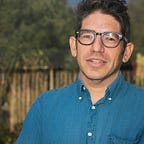Beyond the Dark Forest Theory of the Internet
Re-learning how to be yourself online
This is a two-part post. Click here for part one.
Prequel to the Dark Forest
Two weeks ago I wrote about the dark forest theory of the internet. I used the dark forest theory to explain why we’re afraid to be public online, and what could be lost as a result.
I first connected the dark forest theory with the internet when I had a strange realization earlier this year: that I knew how to be myself in real life, but I didn’t know how to be myself online.
In “real life” I’m a reasonably self-confident, 40-year-old human. If we sat next to each other on a plane we’d have a good-to-memorable conversation.
But on the internet, I feel like a teenager struggling to find their identity. I’m all awkward exclamation points and weird over-explanations. I’m often too self-conscious to be interesting or real.
When I used the internet as an actual adolescent in the 1990s and as a young adult in the 2000s, this wasn’t the case. I blogged every day. Message boards were how I learned to test theories and debate ideas. These communities were small enough that people knew each other but big enough that there was a diversity of opinion and conversation. You…
